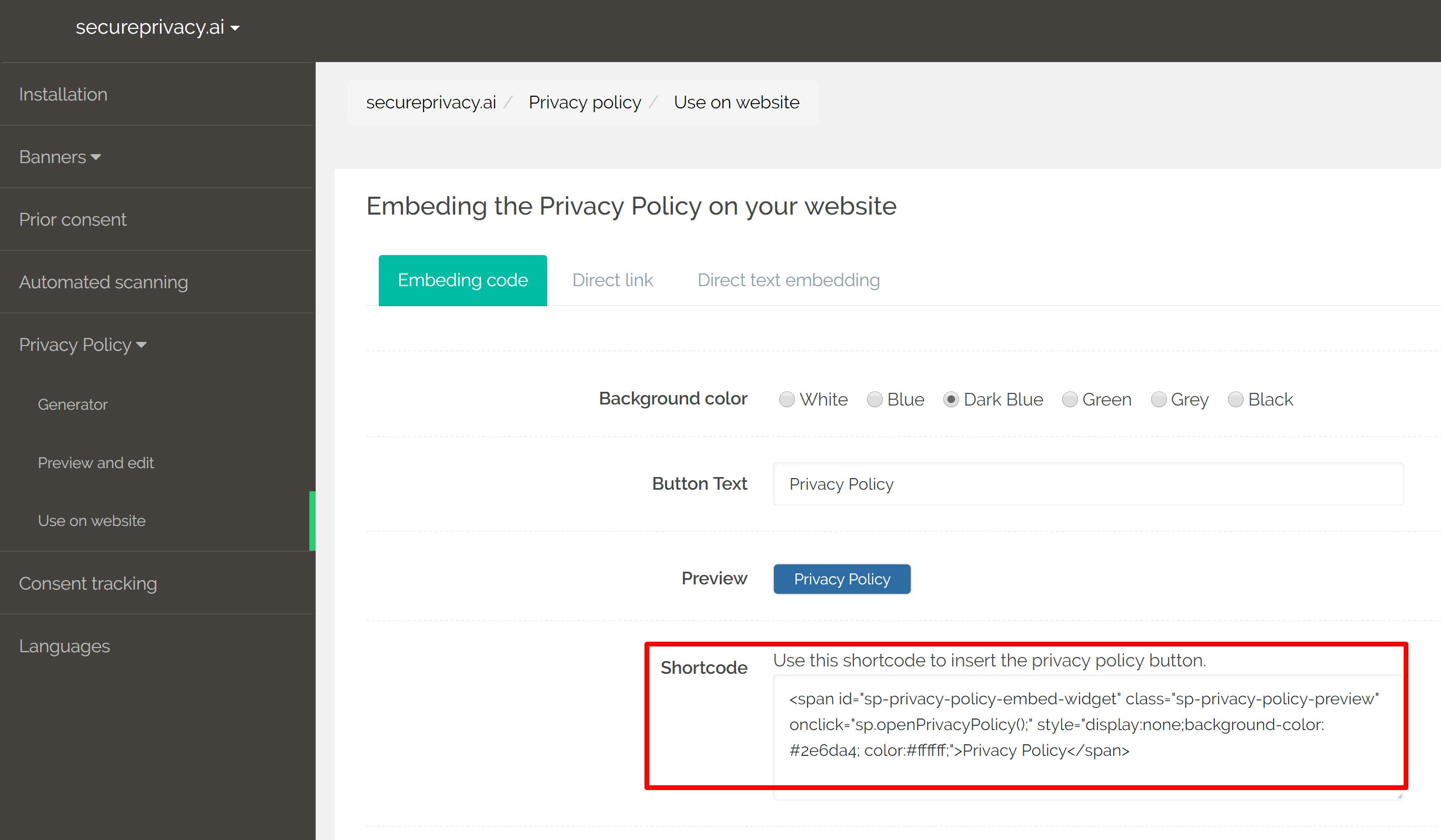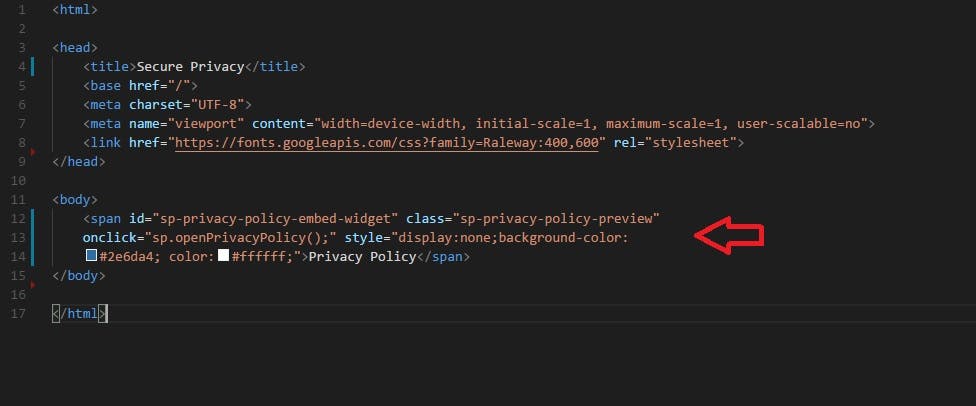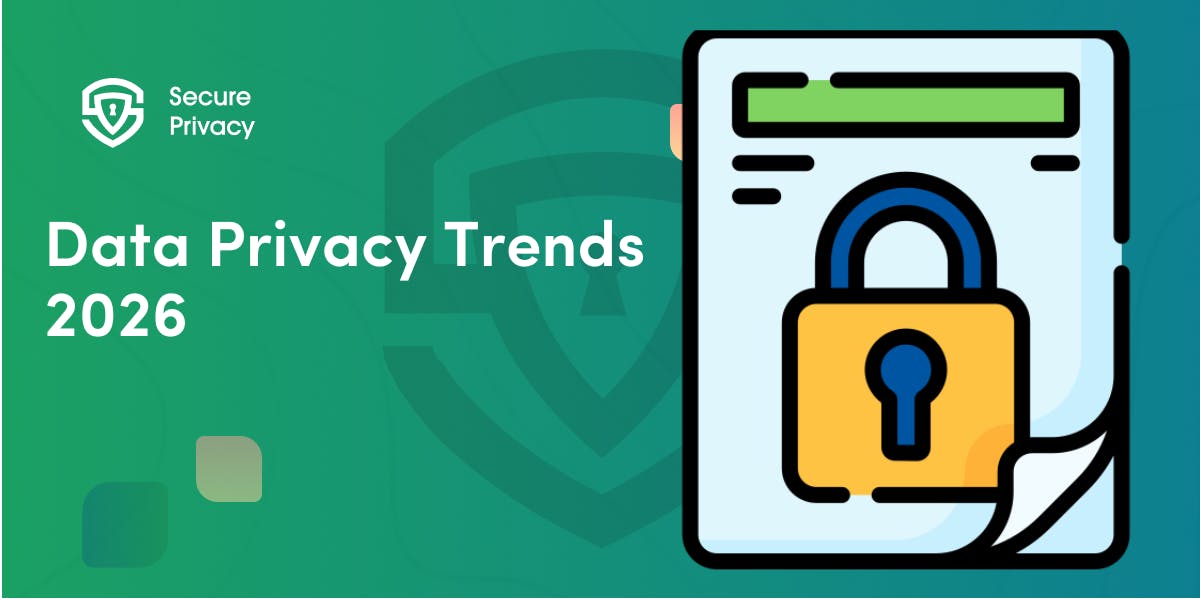How to add a Privacy Policy button on a website
Add a Privacy Policy button to a website, e.g. in the footer. This guide explains you how to add this with Secure Privacy.
With a Secure Privacy cookie and privacy policy generator you can add a privacy button on your website.
The image below shows an example of how it can look to have a privacy button on your website.
The screenshot is from our own website and the privacy button is located in the footer.
Note: This instruction assumes that you have already installed Secure Privacy on your website.

Follow the following steps to add a privacy button to your website:
1. Go to your account > Privacy Policy > Use on Website > Embedding code.
2. Select the background color that you prefer for your privacy button.
3. Copy the code.

4. Open your web page in any HTML editor.
5. Paste the HTML code anywhere inside the body section of your HTML page.

6. Save your page and your Privacy button will start appearing.
You might also be interested in this article:
- How to Be GDPR Compliant with Google Analytics
- See more on the requiresments for CCPA Privacy Policy

Privacy Governance for Small Businesses: Step-by-Step Guide
You're a 20-person company. A customer asks for their data. Your marketing team just added a new tracking pixel. Your CRM vendor updated their terms. And you just realized you might need to comply with GDPR, CCPA, or both.
- Legal & News
- Data Protection

Data Privacy Trends 2026: What Every Business Needs to Know
You're planning next year's compliance roadmap, but the rules keep changing. New regulations emerge monthly. Enforcement penalties double overnight. And now, AI governance lands on your desk alongside data privacy obligations.
- Legal & News
- Data Protection

How to Build a Privacy Governance Framework: Step-by-Step Guide
Privacy governance isn't about checking regulatory boxes — it's about building systematic capability to manage personal data responsibly across your entire organization. Whether you're facing GDPR obligations, preparing for CCPA enforcement, or establishing foundational privacy practices, a structured framework transforms compliance from reactive firefighting into proactive risk management.
- Legal & News
- Data Protection
